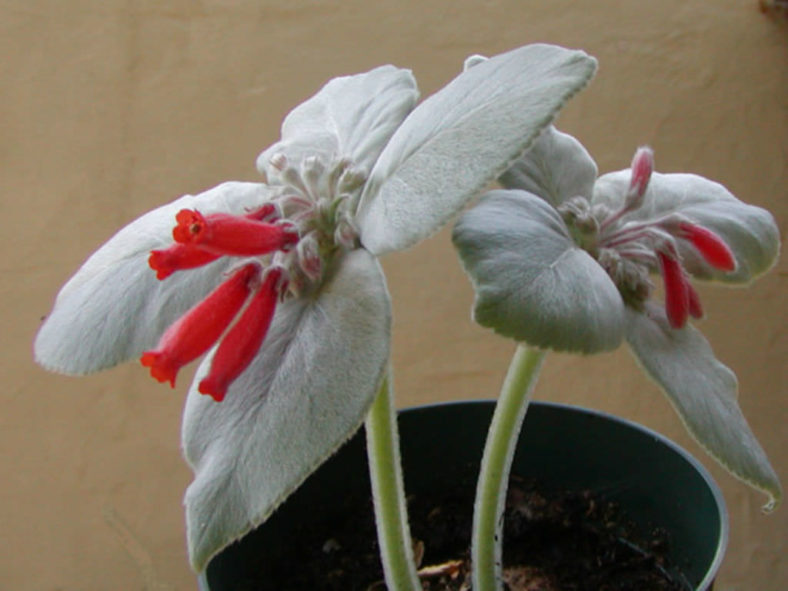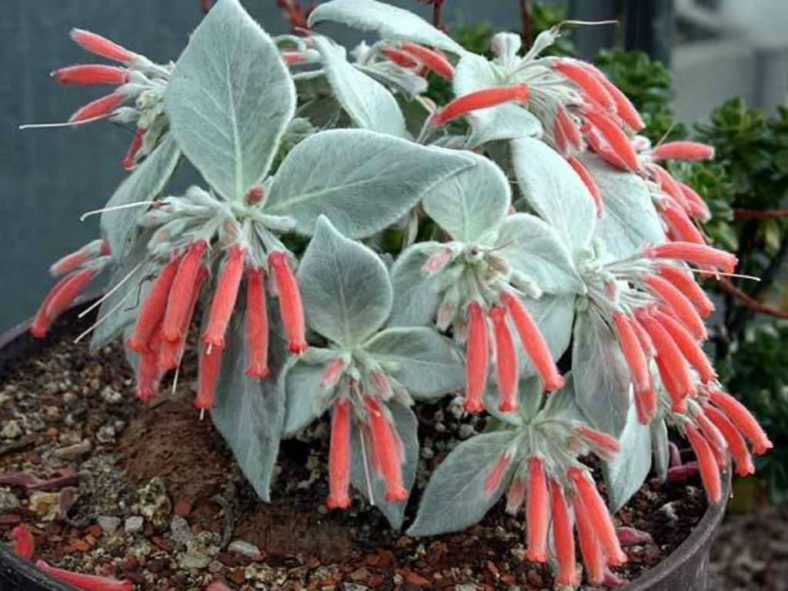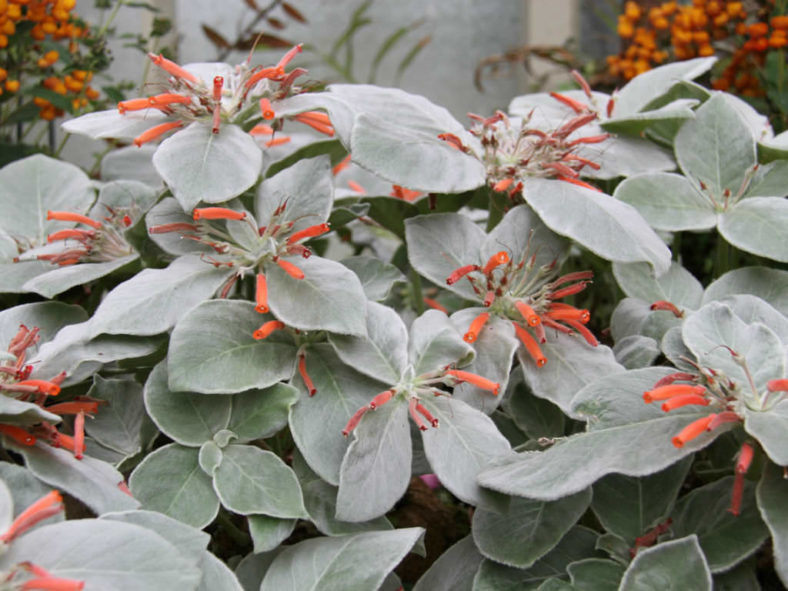Scientific Name
Sinningia leucotricha (Hoehne) H.E.Moore
Common Name(s)
Brazilian Edelweiss
Synonym(s)
Rechsteineria leucotricha
Scientific Classification
Family: Gesneriaceae
Genus: Sinningia
Origin
Sinningia leucotricha is native to Brazil (Paraná).
Description
Sinningia leucotricha is an attractive succulent with a large, rounded tuber from which a few short, annual stems emerge, holding small, fuzzy, silver-green leaves, usually in whorls of 4. The tuber can reach a diameter of up to a foot (30 cm). The leaves are egg-shaped to elliptic and can measure 6 inches (15 cm) in length and 4 inches (10 cm) in width.
The reddish-orange flowers appear just above the leaves from spring to early summer. As the flowers fade, the leaves lose their silver cast and then drop off, marking the start of a dormancy period. The timing is not always predictable, and the leaves sometimes stay on the plant longer, only shedding them when the new leaves emerge in early spring.

Hardiness
USDA hardiness zone 10a to 11b: from 30°F (-1.1°C) to 45°F (7.2°C).
How to Grow and Care
Sinningias grow from tubers, so there is seasonality to them. When the plant is actively growing, keep it lightly moist. When the foliage dies back, mist the soil regularly to prevent the tubers from drying out excessively. Start regular watering when new leaves begin to appear. Like most plants, Sinningias can survive a short drought, but they don't recover from prolonged drought. Use tepid water when watering. Nobody enjoys a cold shower. Water the soil, not the plant. Sinningias are prone to crown rot and gray mold when the leaves stay wet. Do not let the plant sit in water. It must be well-drained.
Sinningias are shade plants. They have the exact light requirements as African Violets. Morning or soft, late afternoon light is best. That means an East, shaded West, or North-facing window. Avoid direct sun during the harsh "skin cancer" hours of the day.
See more at How to Grow and Care for Sinningia.
Links
- Back to genus Sinningia
- Succupedia: Browse succulents by Scientific Name, Common Name, Genus, Family, USDA Hardiness Zone, Origin, or cacti by Genus
Photo Gallery
Click on a photo to see a larger version.


